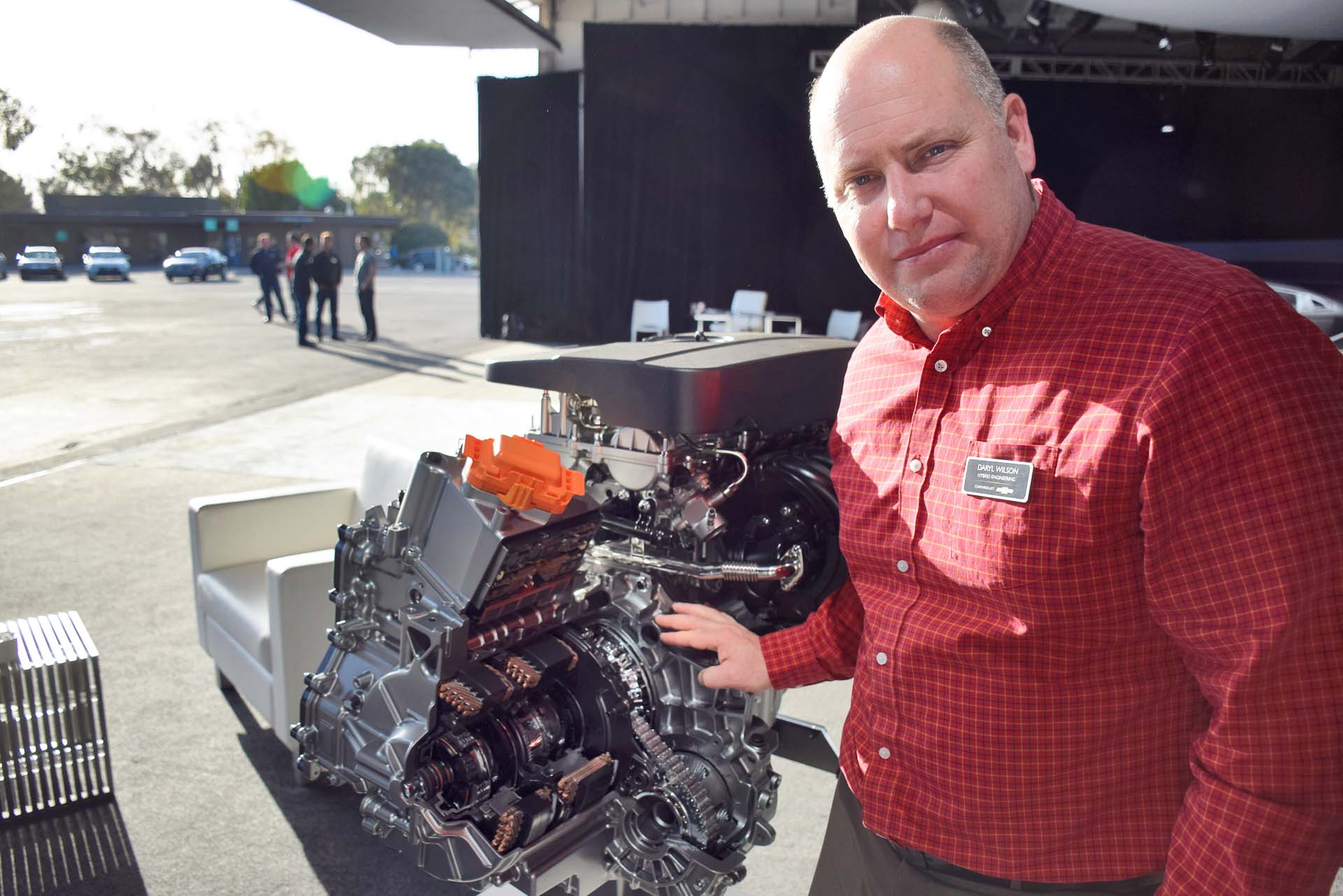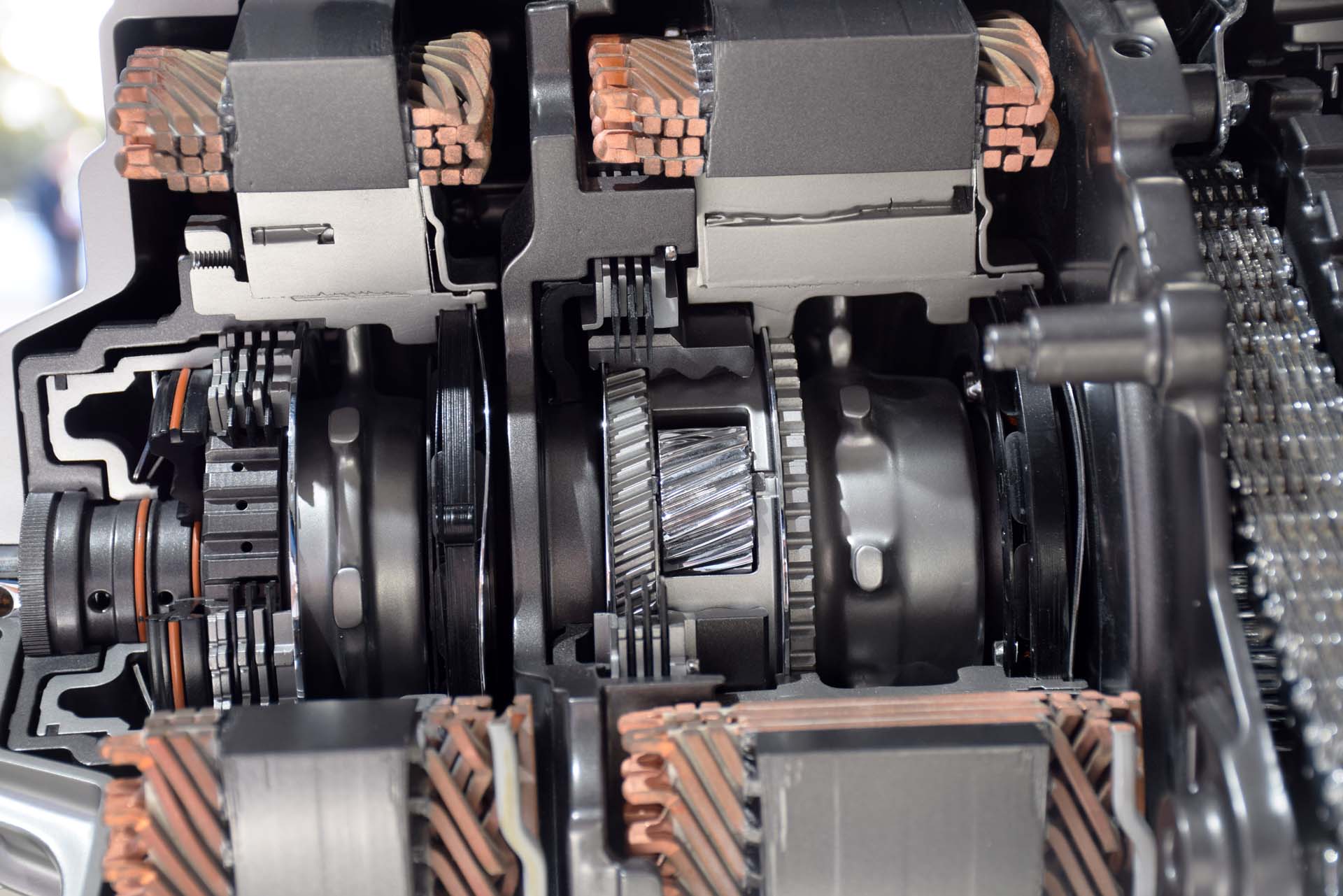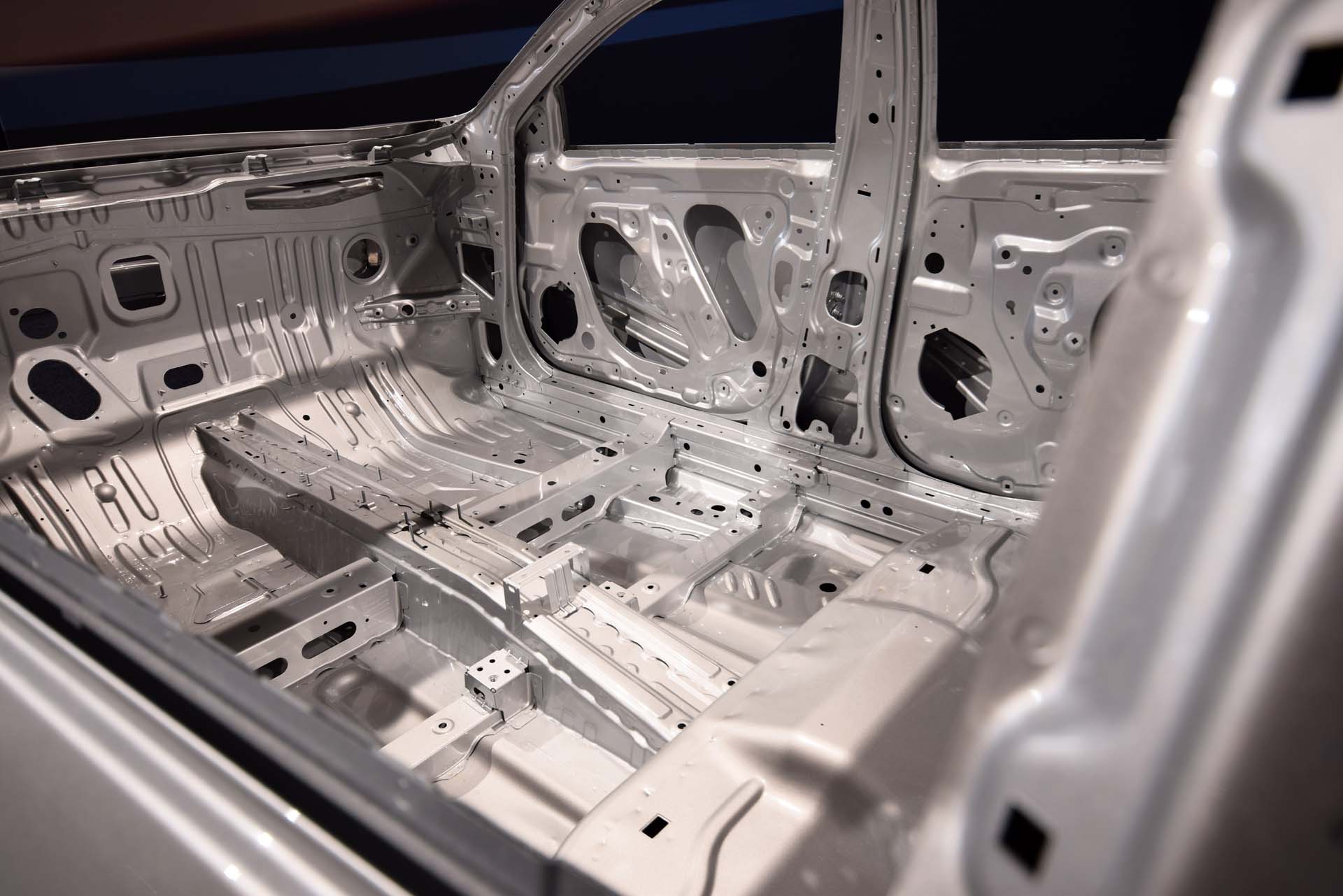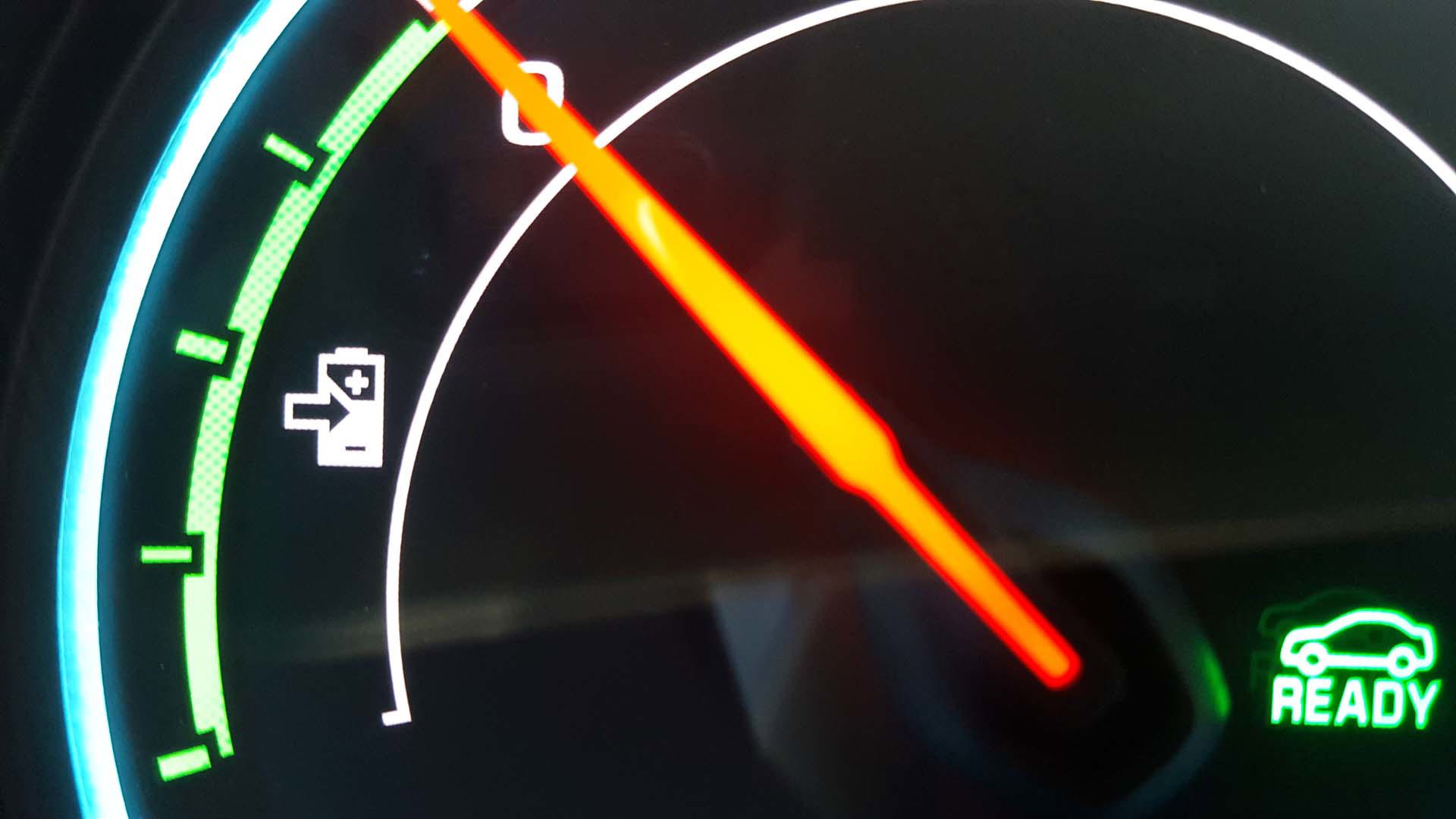“It had to be a real car.”
Jesse Ortega, the new Chevrolet Malibu’s Chief Engineer, was explaining about the Malibu Hybrid’s new body structure, how it borrowed key technologies from the award-winning Chevrolet Volt, and how tweaking and calibration of details, big and small, were key in creating a hybrid with widespread appeal.
Talking to Ortega and his team, you feel like you’re talking to any of your car-guy or car-gal friends, lighting up while gabbing about the latest and greatest. These folks love cars, and just happen to design and engineer them, too.
“Did you notice the brakes? Aren’t they great?” he beamed.
I’d just completed a quick test-drive, and the brakes were pretty darn good. Still artificial feeling, as virtually all brakes in hybrid cars are, but notably less fake than the norm, as two distinctive braking systems (electric regenerative braking and good-old friction-based braking) merge into one another at the direction of a single pedal.

The much-improved feel of the brakes, says Ortega, came from a lengthy fine-tuning and collaboration process between his engineers, and the folk at Bosch, who supply many of the associated brake system components, including a special module designed to minimize the fake and disconnected braking feel common in so many hybrids.
Malibu Hybrid was designed to be a hybrid that doesn’t come off like one. No funny business from the brake pedal. No special EV mode to help enable short, low-speed trips powered solely by electrons. No special Eco or Sport modes to fine-tune system operation against varying tastes for different combinations of efficiency and responsiveness.
Daryl Wilson, Malibu Hybrid’s Lead Development Engineer, says, “We designed this car with no special modes, and no new techniques to learn. With Malibu Hybrid, we want shoppers to get in, put it in ‘drive’ and go. That’s it.”
The Malibu Hybrid even uses the same tires as the standard model, and sits mid-pack between the 1.5L and 2.0: turbo four-cylinder gas engines in terms of acceleration performance and output, offering 182 horsepower.
 Malibu Hybrid Lead Development Engineer Daryl Wilson with hybrid system
Malibu Hybrid Lead Development Engineer Daryl Wilson with hybrid system
“We didn’t want the Hybrid to feel like a special model, or anything unique,” Wilson added.
Earlier, he had explained how engineers had even played around with a few dozen muffler designs for the Malibu hybrid, to combat a particularly difficult-to-neutralize exhaust tone from the engine when it kicked in. Eventually, a solution was discovered and implemented.
“All of our noise, refinement, handling and isolation characteristics were maintained for the Hybrid. In many hybrids, certain elements are compromised, but not in this one.”
In creating a hybrid that doesn’t act like one, GM hopes the Malibu Hybrid will help get more shoppers interested. Other than a few squirms and grumbles from the driveline as the gas engine kicks in and out, and as electric and thermal propulsion are blended and switched, it operates like a normal car. Even the badging and cosmetics are the same, other than the tachometer being replaced by a power output monitor, and a tiny ‘H’ badge on the trunk lid.
And you just drive it. Wilson explained how, as in all hybrids, a complicated computer algorithm decides when, and how, to run the gas engine.
“It’s actually the most efficient to run the engine, to produce electricity, while you’re accelerating quickly,” he mentioned. “But you don’t need to drive to keep the battery charged, or to try to force the gas engine to stay off. Some drivers attempt to keep the battery level display full. This is incorrect – the battery here is always charging and discharging. However you drive the Malibu Hybrid, it’s always optimizing its efficiency.”
There’s a bit more care on the part of the driver required for efficient braking, which, when done properly, can send piles of power back into the battery, reducing the need for the gas engine to run. You watch this process in the ‘charge’ portion of the power meter in the instrument cluster, which has four ‘ticks’, each representing 10 kilowatts, for 40 in total. Where possible, it’s ideal to brake at a rate that keeps the needle to 40 kilowatts or less, so as much of the required deceleration comes from regenerative braking, which recharges the battery.

“If you exceed that 40 kilowatt threshold, the friction brakes engage”, Wilson comments. “So, if drivers look far enough up the road and brake gently, for a longer distance, rather than all at once, they’ll generate more electricity, which saves more fuel.”
The above is all fairly standard stuff for modern hybrid cars, and the new Malibu Hybrid has two key systems at play in furthering the fuel-saving goal.
First is the Malibu Hybrid’s next-generation two-motor drive system, cloned largely from the system used in the Chevrolet Volt. Rather than a conventional transmission with gears, two electric motors enable two separate modes, with a CVT-like overall driving feel. In extremely simplified terms, an initial mode acts like low gear, enabling quick acceleration and responsiveness at lower speeds.
Then, the trick.
Unlike its competitors, the two-mode system can engage a second mode, which acts like a sort of hybrid driveline ‘overdrive’, slowing the speed of the electric motors and gas engine, to boost overall system efficiency at higher driving speeds.
This takes much of the compromise away when you’re driving your hybrid at highway speeds, says Wilson.
 two-mode transmission
two-mode transmission
“Typically, hybrids are best at saving fuel in city driving. With our two-mode system speeding things down in the powertrain, it’s a big efficiency boost on the highway. For shoppers who have typically avoided a hybrid because they do a lot of highway driving, our two-mode system makes the Malibu Hybrid worth a closer look.”
In plain English? Using the two-motor, two-mode system that lives inside of the Malibu Hybrid’s transmission, the benefits of hybrid driving are maintained in more situations.
The second unique system helps further extend the benefits of hybrid driving to cold weather operation.
The system? Exhaust Gas Heat Recovery, or EGHR. Heat for the cabin in a hybrid car is typically generated, mostly, by the operation of the gas engine. The colder it gets outside, the more the engine has to run, and the more fuel is burned.
With EGHR, which is still relatively rare in this segment, heat from the exhaust stream is captured and transferred to the engine coolant, helping the engine to stay warmer for longer, and reducing the amount of time it needs to run when it’s cold outside.
“It’s a fairly simple system,” Wilson remarks. “There’s a bypass valve at the end of the exhaust manifold. It can be switched, directing the exhaust flow out of the tailpipe, or, past a special heat exchanger that’s connected to the engine’s cooling system. When the valve opens, exhaust is diverted through the heat exchanger, and the heat of the exhaust, which would otherwise go out the tailpipe, helps heat the engine, which helps save fuel. It closes the gap between cold temperatures and fuel efficiency.”
 Daryl Wilson with battery pack
Daryl Wilson with battery pack
I asked Wilson about driving a hybrid in a climate like mine during wintertime, where temperatures can fall to 40 below, or colder, for days on end. Though most folk who live in a climate like this don’t drive a hybrid, Wilson says they could, if they liked.
“We’ve made huge advances with the new battery,” he notes. Built in collaboration with Hitachi, the new battery has numerous improvements, including performance in extremes of temperature.
“There’s no 12-volt starter battery in the Malibu Hybrid. There’s only one battery. And thanks to new chemistry and other optimizations, it meets our company-wide goals for cold weather performance.”
Wilson explained that all Chevrolet models need to start, unassisted, at 30 below, and assisted, perhaps by a battery warmer or block heater, at 40 below.
The big challenge for extreme cold starts in Malibu Hybrid isn’t the performance of the battery – it’s the performance of the fluid in the transmission. A fluid-driven clutch needs to close in order for the engine to start, and since that fluid has the consistency of peanut butter at 40 below, it takes considerably longer for it to fill the system, and get that clutch clamped shut.
A warning message that reads “INITIALIZING...WAIT TO SHIFT!” appears at startup of the Malibu Hybrid for a second or two during most cold starts. At 40 below, that message may display for about 15 seconds, as the nearly-solid fluid is laboriously pumped through the transmission.
 battery pack
battery pack
“In our cold testing for the Malibu Hybrid, we didn’t need any assistance for the battery at 40 below. It will start,” Wilson states. “Plus, with our new battery architecture, we were able to include folding rear seats – perfect for hockey sticks and gear!”
The new battery is smaller, holds more electrons, and, says GM, is the most advanced and power-dense battery pack in a hybrid to date. Part of the reason why is because of a simple design change to so-called prismatic cells.
This neato and complicated-sounding term explains a very simple concept. By breaking away from traditional can-shaped battery cells and switching to a rectangular cell design, there’s less wasted space inside of the battery pack, and cells can be placed more closely to one another.
“You can’t really package cylinders efficiently, as there’s always empty space,” says Wilson. In addition to optimized packaging, Malibu Hybrid’s more compact battery has new chemistry, fully optimized for the fast charging and discharging required of a hybrid car. This is in contrast to an electric car, where the chemistry is all about storage volume. Mounted behind the rear seats, Malibu Hybrid’s compact new battery pack is air cooled by an electric fan, which pulls cool air through the unit, and across each of the tightly-spaced cells.
 lighter frame structure
lighter frame structure
Malibu’s body structure, reinforced with ultra-strong, ultra-light high-tensile steel, helps boost efficiency, too. With a body structure alone that’s some 45 kg leaner than the previous car, despite being notably larger, weight reduction measures put Malibu, and Malibu Hybrid, at or near the lightest positions in their respective categories. Make a car light, and you simultaneously make it faster, and easier on fuel.
A lot of incremental things add up here, to create a hybrid sedan that kiboshes common compromises. The new Malibu Hybrid will be on sale in 2016.






















